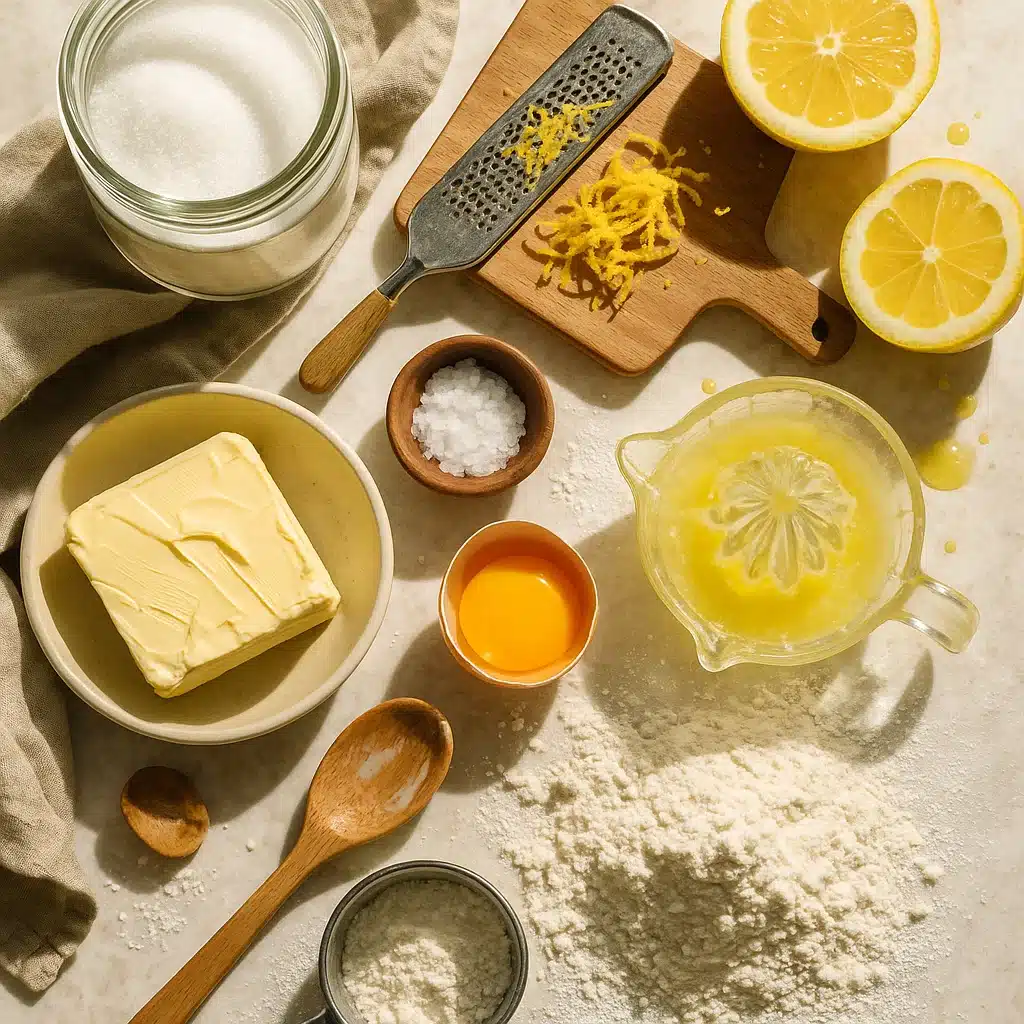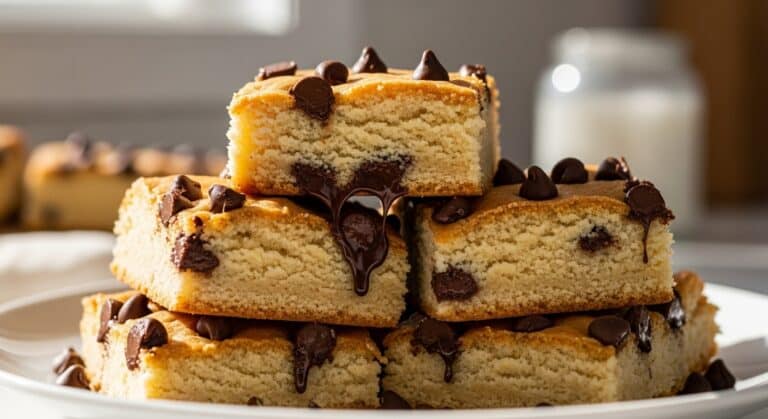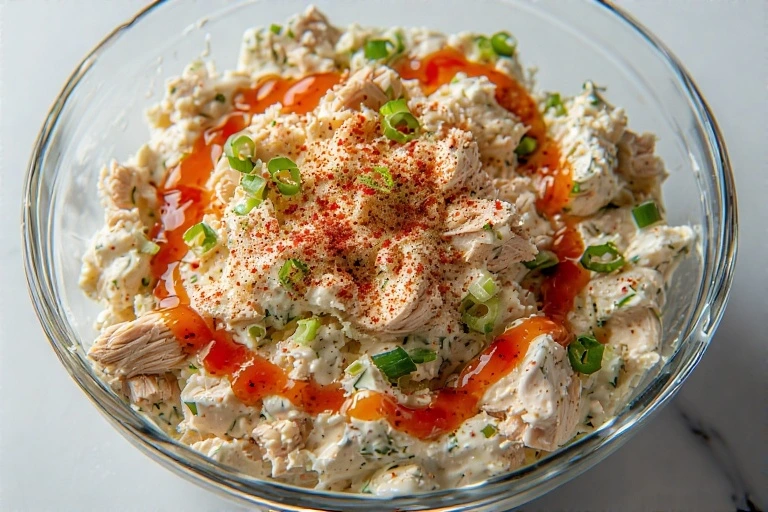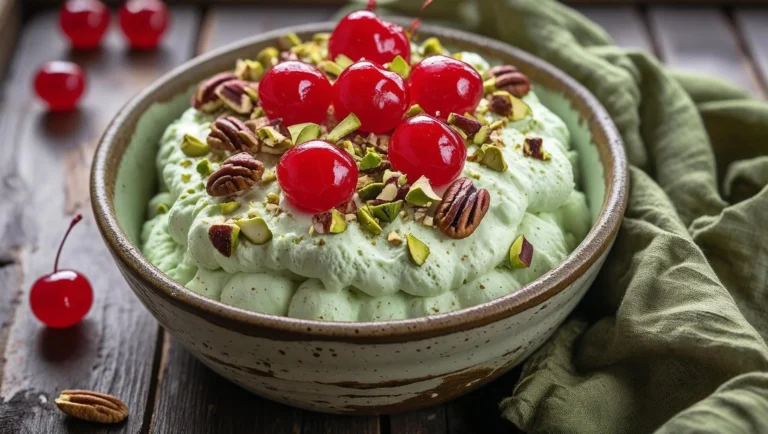How to Make Lemon Shortbread Cookies: Buttery, Zesty & Delicious
Lemon shortbread cookies are a zesty twist on a time-honored classic. With their buttery crumb, citrus brightness, and melt-in-your-mouth texture, these cookies strike the perfect balance between rich and refreshing. Whether you’re baking for guests, prepping for a party, or simply indulging at home, lemon shortbread cookies always bring a pop of sunshine to your dessert tray.
In this comprehensive guide, you’ll discover everything you need to make flawless lemon shortbread cookies. From choosing the right ingredients to mastering mixing and baking techniques, we’ll cover it all. Even better, we’ll answer the most common baking questions along the way, so you feel confident from start to finish.
Looking for inspiration? Try these lemon cupcakes for another fresh citrus treat.
Let’s get baking—and turn your next batch into your most delicious one yet.
Why Lemon Shortbread Cookies Are a Timeless Treat
The Appeal of Shortbread Cookies
Shortbread has long been loved for its rich, buttery flavor and delicate, crumbly texture. Although it originated in Scotland, it has since become a cookie favorite worldwide. Thanks to its simple formula—usually just flour, butter, and sugar—shortbread is incredibly easy to make.
Unlike chewy or cakey cookies, shortbread offers a clean, crisp bite followed by a melt-away finish. Since traditional shortbread doesn’t use eggs, the result is a sandy, tender texture that holds up well in storage. Moreover, its plain base makes it perfect for add-ins like citrus, herbs, or chocolate.
PrintLemon Shortbread Cookies
These lemon shortbread cookies are buttery, crisp, and bursting with bright citrus flavor. Simple to make and perfect for gifting or snacking.
- Prep Time: 35 minutes
- Chilling: 20 minutes
- Cook Time: 20 minutes
- Total Time: 1 hour 15 minutes
- Yield: 40 cookies 1x
- Category: Dessert
- Cuisine: American
Ingredients
4 oz granulated sugar
3 tsp lemon zest
8 oz unsalted butter, room temperature
½ tsp kosher salt
1 large egg yolk
2 tsp lemon juice
12 oz unbleached all-purpose flour
Lemon Glaze (Optional):
1 cup powdered sugar, sifted
4–5 tsp fresh lemon juice

Instructions
Zest lemon over sugar and rub to infuse.
Beat butter and salt into lemon sugar until smooth.
Add yolk and juice, mix just to combine.
Add flour and mix on low; increase speed briefly until dough clumps.
Roll the dough out to a ¼-inch thickness, then use a 2-inch round cutter to shape the cookies. Prick each with a fork.
Chill 20 mins.
Bake at 300°F for 20–22 mins. Cool completely.
Optional: Glaze and allow to dry.
Notes
Use a kitchen scale for best results. If measuring by volume, spoon flour into the cup and level with a knife—don’t tap.
Flour: 2¾ cups (125g per cup)
Butter: 1 cup (16 tbsp)
Sugar: ½ cup + 1 tbsp
Kosher salt is optional but adds a nice balance. Use high-quality unsalted butter like Tillamook, Kerrygold, or Challenge for the best flavor.
To freeze unbaked cookies, cut and freeze on a tray until firm, then transfer to a sealed container. Bake straight from frozen—add 2–5 mins.
For baked cookies, cool completely before freezing. Layer with parchment and thaw at room temp before serving.
Nutrition facts are estimates and may vary based on ingredients used, portion sizes, and preparation methods
Nutrition
- Serving Size: 40 cookies
- Calories: 84kcal
- Sugar: 3g
- Sodium: 30mg
- Fat: 5g
- Saturated Fat: 3g
- Unsaturated Fat: 2g
- Trans Fat: 0.2g
- Carbohydrates: 9g
- Fiber: 0.2g
- Protein: 1g
- Cholesterol: 17mg
Keywords: lemon shortbread cookies, granulated sugar, lemon zest, unsalted butter, kosher salt, egg yolk, lemon juice, all-purpose flour
Let’s connect! Follow me for more Joylicious Recipes: Facebook, Instagram, Pinterest
How Lemon Elevates Classic Shortbread
While classic shortbread is already delicious, lemon takes it to another level. In fact, the citrus flavor adds complexity and brightness that cuts through the richness of butter beautifully. Lemon zest provides a floral, fragrant quality, whereas lemon juice brings a tangy finish.
Not only does this combination enhance the cookie’s flavor, but it also makes it more visually appealing and aromatic. Because of this, lemon shortbread cookies feel lighter and more vibrant—perfect for spring, summer, or any time you need a little zing.
Don’t miss our mini lemon cheesecakes if you’re craving more bright, citrus-forward bakes.
Essential Ingredients for the Best Lemon Shortbread Cookies
The Power of Real Lemon Zest and Juice
To truly bring out the vibrant flavor in lemon shortbread cookies, you need both lemon zest and lemon juice. While lemon juice provides a tangy kick, it’s the zest that delivers those bold citrus oils and aroma. That’s why it’s important to zest the lemon directly over the sugar—you’ll capture all the fragrant oils that might otherwise get lost.
Additionally, using fresh-squeezed juice makes a major difference. Bottled juice tends to taste flat or overly sour, while fresh juice adds brightness and balance. Combined, these two lemon elements give your cookies a fresh-from-the-bakery flavor you can’t fake.
Moreover, adding the zest into the sugar and massaging it with your fingers infuses the sugar with citrus oils. This simple technique ensures a burst of lemon flavor in each bite.
Why Unsalted Butter Matters in Baking
Butter is the foundation of shortbread. In fact, it makes up more than a third of the entire recipe. Therefore, the type and quality of butter you use will make or break your cookies. Always choose unsalted butter—this gives you full control over the cookie’s salt content and avoids overpowering the lemon notes.
Room temperature butter is crucial as well. Cold butter won’t mix evenly, and melted butter will ruin the dough’s structure. You want it soft, creamy, and ready to whip into a light, fluffy base with the sugar.
Not all butter is created equal. Brands like Tillamook, Kerrygold, and Challenge Butter are excellent choices because they deliver both flavor and consistency.
Learn more about healthy breakfast cookies for other easy bakes with wholesome ingredients.
Step-by-Step Guide to Making Lemon Shortbread Cookies
Preparing and Infusing the Sugar with Lemon Zest
The first step in making perfect lemon shortbread cookies is building flavor right from the base. Begin by placing the granulated sugar into the bowl of a stand mixer. Zest fresh lemons directly over the sugar to ensure that all the fragrant citrus oils fall into the bowl.
Next, use your fingers to rub the zest into the sugar until the mixture feels sandy. This extra touch infuses the sugar with natural lemon oils, intensifying the citrus essence. As a result, you’ll notice the lemon flavor come through in every crumb of your cookies.
After preparing the lemon-sugar mixture, add the unsalted butter and salt. Mix using the paddle attachment on medium speed until the mixture becomes smooth and creamy—this should take about two minutes. Once blended, stop the mixer, scrape down the bowl, and add the egg yolk and lemon juice. Continue mixing just until the wet ingredients are fully combined.
Finally, add the flour all at once and mix on low until it’s just incorporated. At this stage, the dough will be crumbly. Turn the mixer up to medium speed for a few seconds to bring the dough together into larger clumps.
Mixing, Rolling, and Cutting Dough Like a Pro
Once your dough is mixed, turn it out onto a lightly floured surface, parchment paper, or a silicone mat. Gently form the dough into a loose rectangular shape using your hands.Lightly flour the top—just enough to prevent sticking—then roll it out to 1/4-inch thickness.
Cut out circular shapes from the dough with a 2-inch round cutter. Place them on a parchment-lined sheet or tray, leaving a bit of space between each one. Using a fork, gently prick the center of each cookie. This step allows steam to escape during baking, so your cookies maintain their shape and texture.
Chill the cut-out cookies in the fridge for at least 20 minutes. Chilling helps firm up the butter, which keeps the cookies from spreading in the oven.
Check out easy strawberry shortcake bars for another sweet, summery treat worth trying.
Mastering the Baking Process
Chilling Dough for Shape Retention
Chilling the dough isn’t just a recommended step—it’s essential. Once you’ve cut out your lemon shortbread cookies, place them on a parchment-lined sheet and refrigerate them for at least 20 minutes. Why is this important? Because cold dough holds its shape better when baked.
Without chilling, the butter in the dough melts too quickly in the oven, which causes cookies to spread and lose their clean edges. By cooling the dough first, you allow the butter to firm up again. As a result, your cookies bake evenly with crisp edges and a smooth surface.
Additionally, this step helps the gluten relax, which contributes to that tender, melt-in-your-mouth texture shortbread is known for.
Baking Time, Oven Temperature & Golden Edges
Before baking, preheat your oven to 300°F. This low and slow approach allows the cookies to bake through gently without browning too quickly. Place the chilled cookies on a parchment-lined baking sheet, spacing them about 1.5 inches apart.
Bake for 20 to 22 minutes, or until the bottoms are lightly golden. The tops will remain pale, which is what you want—shortbread shouldn’t be deeply browned. Keep an eye on them during the last few minutes to avoid overbaking.
Once baked, remove the cookies and let them cool on the tray for five minutes. Next, place the cookies on a wire rack and let them cool down completely. If you’re reusing the same baking sheet for another batch, let it cool first to prevent uneven baking.
Don’t miss our cookie dough bites recipe if you’re looking for more irresistible homemade cookie ideas.
Optional Lemon Glaze for Extra Flavor
Making a Simple Lemon Glaze That Shines
Although lemon shortbread cookies are delicious on their own, a drizzle of lemon glaze can take them to the next level. It not only adds a burst of citrus flavor but also creates a glossy finish that makes the cookies look bakery-ready.
To prepare the glaze, sift one cup of powdered sugar into a mixing bowl to eliminate any clumps. Add three teaspoons of freshly squeezed lemon juice and stir until combined. Continue adding lemon juice, just half a teaspoon at a time, until you reach a smooth, pourable consistency. The glaze should be thick enough to coat the cookies without running off the edges completely.
This glaze brings a tart-sweet contrast to the buttery shortbread, which enhances the lemon notes without overpowering them. It’s a great option if you’re serving the cookies for a party, holiday tray, or special gathering.

Glazing Techniques for a Beautiful Finish
Once the cookies have cooled completely, they’re ready to glaze. Use the back of a spoon or a small offset spatula to spread a thin layer of glaze across the top of each cookie. You can also dip the tops lightly into the glaze for a smoother, shinier look.
After glazing, place the cookies on a flat surface in a single layer. Allow them to rest uncovered so the glaze can set and dry. This typically takes about 30 to 45 minutes, depending on humidity. If you’re serving the cookies immediately while the glaze is still wet, be sure not to stack them to prevent smudging.
Discover great ideas like lemon cream cheese dump cake if you’re a fan of easy lemon desserts with a tangy kick.
Pro Tips for the Perfect Cookie Every Time
Butter Temperature and Dough Texture
Getting the butter just right can make all the difference when baking lemon shortbread cookies. Always use room temperature butter—soft but not melted. If your butter is too cold, it won’t cream properly with the sugar and zest. On the other hand, if it’s too soft or melted, the dough can become greasy, and your cookies might spread too much in the oven.
A well-mixed dough should feel slightly soft but hold together when squeezed. If the dough is still too crumbly after mixing, beat it on medium for a few extra seconds until larger clumps form. However, be careful not to overwork the dough. Overmixing can lead to tough cookies and ruin the tender, delicate texture that makes shortbread so special.
Additionally, prick the cookies with a fork before baking. This small but important step allows steam to escape and keeps the cookies from puffing up unevenly.
Measuring Ingredients Accurately for Consistency
Precision is key in baking. To ensure consistent results every time, use a kitchen scale to weigh your ingredients. Shortbread has a high butter-to-flour ratio, so even a small measuring error can change the texture. If you’re not using a scale, use the spoon-and-level method for flour: spoon it into your measuring cup and level it off without tapping.
Here’s a quick ingredient conversion for accuracy:
| Ingredient | Weight | Cup Measurement (approx.) |
|---|---|---|
| Unbleached All-Purpose Flour | 12 oz (340g) | 2 ¾ cups |
| Unsalted Butter | 8 oz (227g) | 1 cup (16 tbsp) |
| Granulated Sugar | 4 oz (113g) | ½ cup + 1 tbsp |
Looking for inspiration? Try banana chocolate chip cookies for another simple and satisfying baking project.
Storing and Freezing Lemon Shortbread Cookies
Storing Tips to Maintain Freshness
Once your lemon shortbread cookies have cooled and, if glazed, the icing has fully set, it’s time to store them properly to keep that perfect texture. Place the cookies in an airtight container and store them at room temperature. They’ll stay fresh for up to two weeks—though they rarely last that long!
Layer the cookies with sheets of parchment or wax paper in between to prevent them from sticking or breaking. Keep the container in a cool, dry area away from direct sunlight, which can affect the glaze and make the cookies overly soft.
If you’re not serving all the cookies at once, consider dividing them into smaller containers. That way, you’re only opening what you need and preserving the freshness of the rest.
Freezing Instructions for Dough and Baked Cookies
Good news—lemon shortbread cookies freeze beautifully. In fact, you can freeze both the unbaked dough and fully baked cookies for future snacking or holiday prep.
To freeze unbaked dough:
Roll and cut the dough into cookies as usual, then place them in a single layer on a parchment-lined tray. Freeze until firm (about 2–3 hours), then transfer to a freezer-safe bag or container. Separate layers with parchment to prevent sticking. Write the date on the container before storing it in the freezer for up to three months. When ready to bake, no need to thaw—just add an extra 2 to 5 minutes to the baking time.
To freeze baked cookies:
Let the cookies cool completely. Place the cookies in a single layer on a baking tray and freeze them until they’re firm. Once frozen, layer them with parchment in a freezer-safe container or bag. They’ll keep for up to 2 months. To serve, allow them to thaw at room temperature for about an hour. If glazed, be extra careful during freezing and thawing to avoid cracks.

Learn more about mini pineapple upside-down cheesecakes for another make-ahead dessert idea that’s perfect for parties.
Mistakes to Avoid When Baking Lemon Shortbread Cookies
Common Errors That Ruin Shortbread Cookie Texture
Even the simplest cookies can go wrong if a few key steps are missed. When making lemon shortbread cookies, one of the most common mistakes is overmixing the dough. Once the flour is added, mix just until it’s incorporated. Overworking the dough develops too much gluten, which can lead to a tougher, less delicate cookie.
Another issue is starting with butter that’s too soft. While room temperature butter is essential, it shouldn’t be greasy or melting. Overly soft butter can cause your dough to become oily and make your cookies spread too much during baking.
Skipping the chilling step is a major mistake that can ruin your results. It’s tempting to bake cookies right after cutting them out, but unchilled dough will lose its shape and bake unevenly. Make sure to chill the cookies on the baking tray for at least 20 minutes before they go in the oven.
Measuring ingredients incorrectly can also throw everything off. Always use a scale when possible, or follow the spoon-and-level method for flour to avoid adding too much and drying out your cookies.
Preventing Spread and Crumbling in Lemon Cookies
If your cookies are spreading too much in the oven, there are a few likely culprits. First, check your butter—it may be too warm. Second, confirm the dough was chilled long enough. A cold dough helps cookies hold their shape as the butter melts gradually during baking.
On the flip side, if your cookies turn out too crumbly and fall apart, the dough may be too dry. This usually happens when too much flour is added or the dough isn’t mixed enough to come together. Beat the dough just enough to form soft clumps, and it should press together easily.
Also, don’t forget to poke each cookie with a fork before baking. This tiny step allows steam to escape and helps the cookies bake flat and even.
Check out smores cookies recipe for another foolproof cookie idea with nostalgic flavor.
Frequently Asked Questions About Lemon Shortbread Cookies
Avoid overmixing the dough. Too much mixing activates the gluten, leading to tough, chewy cookies instead of the desired tender texture. Also, don’t skip chilling the dough—it helps cookies keep their shape.
Poking holes allows steam to escape during baking. This keeps the surface flat, prevents bubbling, and helps the cookies bake evenly without puffing.
No. Shortcake biscuits are soft, fluffy, and rise with leavening agents. Shortbread cookies are dense, crumbly, and made without baking powder or baking soda.
Use quality butter, don’t overmix, and chill the dough before baking. These steps ensure rich flavor, delicate texture, and well-formed cookies.
Use room-temperature butter—soft, but not melted. Cold butter won’t cream well, while melted butter can ruin the dough’s consistency.
Unsalted butter is best. It lets you control the salt level and keeps the lemon flavor clean and balanced.
Conclusion
Lemon shortbread cookies are more than just a simple treat—they’re a timeless blend of buttery richness and bright citrus flavor. With just a handful of ingredients and a few essential techniques, you can create cookies that look elegant, taste incredible, and store beautifully for days or even weeks.
From properly creaming the butter and sugar to chilling the dough and adding that optional lemon glaze, each step plays a role in creating the perfect bite. And when you take the time to weigh your ingredients and avoid common baking mistakes, your results will consistently impress.
Whether you’re baking these cookies for a holiday party, gifting them to friends, or just treating yourself, this recipe delivers. It’s flexible, forgiving, and always satisfying.
Looking for more easy, crowd-pleasing desserts? Check out lemon blueberry sheet cake for another bright and flavorful bake you’ll love.








